- July 31, 2020
- By Reno Jackson
- In Articles, Guest Post, Meta Reports
- No Comment
- 0
Team WildSide Wild Meta Report (July 2020)
Time Warp is still broken. Aggro counters are weakened. Hunters and Rogues are still garbage. We're not sure if this nerf wave has done more good than harm. But Druids are back though, if that's a good thing.
We would like to thank these top legend players who have given us their expert opinions and helped with writing the report: RenoJackson, Jonahrah, Hijodaikan, SgtSlayer, EpigPlayer, Memnarch, xtuliop, Goku, Niko, Beeozan, Malekith, and Duwin. Their Twitters are to be listed at the end of the report.
As we write without any monetary support, we need your support to keep on writing meta reports for the foreseeable future. If you really like the report and want us to keep going, please consider becoming a Patron here: https://www.patreon.com/thewildside
To get updates on all our future reports, consider joining our Discord server The Wild Side: https://discord.gg/FVZgtVs
Welcome to the Second Edition of Team WildSide’s Wild Meta Snapshot for 2020! We are teaming up with Hearthstone-Decks to provide you the most accurate Wild report possible.
In this meta report, we will be going through a tier list of 60 decks we’ve seen frequently on ladder, explain the method of computing the tier list, break down the meta and analyze the decks as detailed as they need to be. In this report, we have included a Meta Ranking and will be further discussing the state of each class in terms of power and diversity. Also, we’re including some WildSide special decklists that were made by none other than our experts!
METHOD
We collected our experts’ opinions through a spreadsheet, where our Top Wild legend players will rate the given decks with a corresponding score from 1 to 4 in increments of 0.5 (with 1 being top Tier 1 and 4 being bottom Tier 4). We then collect the result, standardize and categorize them in 4 different Tiers. This is what they mean:
Tier 0 (Absolute oppression)
The one deck to beat. You either play it or play decks that can beat it.
Tier 1 (Meta-defining)
Highly-optimised decks with extreme raw power that are very well positioned in the meta.
Tier 2 (High-legend viable)
Competitive decks that are not as well-rounded, but can snatch games off of Tier 1 decks or prey on their direct counters.
Tier 3 (Legend-viable)
Fringe decks that can capitalise on pocket metas that allow it, however, are either suboptimal or outmeta.
Tier 4 (Average)
Decks at a weaker power level that require an extensive understanding to be able to pilot well, however, are not recommended for ladder experience.
Tier 5 (Meme)
Decks that aren’t typically played to get for the purpose of climbing ladder, but still have a decent enough presence to be included in the report.
Within each tier, decks are categorized to either High tier, Mid tier or Low tier to further differentiate their power level.
For Meta Ranking analysis, we allocate points to each deck from Tier 0 to Tier 3 then sum them up. The point system for rating a single deck is as below:
Tier 0: 22
Tier 1: 18 (High), 15 (Mid), 12 (Low)
Tier 2: 9 (High), 7 (Mid), 5 (Low)
Tier 3: 3 (High), 2 (Mid), 1 (Low)
Each deck is also assigned a popularity ranking and a respective coefficient multiplier based on its popularity. The highest multiplier is 12 and the lowest is 7. For example, if Odd Paladin is High Tier 1 and has a multiplier of 12, it will bring the class an additional 216 points.
Therefore, a class can be placed highly on the Ranking system based on one (or both) of these elements: having a few strong decks (deck power) or having many decks (class diversity). If classes share the same score, the class with more top decks will be ranked higher.
REMARKS
The new nerf patch has hit Demon Hunter yet again, and it’s marginally changed the dynamic of the meta. As Pirate Warrior and Odd Demon Hunter see a reduction in playrate despite still being good, Time Warp Mage reclaims the title of the King of the Wild. This change has also let to a surge in slower Aggro decks that naturally prey on the Mage, like Odd Paladin and Discard Warlock.
The last month has also witnessed a myriad of new decks popping up on ladder, thanks to the refinement of the Wild veterans. Darkglare Warlock, Linecracker Druid, Token Druid, and Dead Man’s Hand Warrior are only a few of the decks that have been doing much better during the past month, even though we are less than a month away from a new expansion. This is to show that the meta is never really ‘solved’, particularly in Wild.
Regarding the new expansion, Scholomance Academy, there are just so many great cards that we cannot discuss them all in this part. Please refer to the Class Meta Ranking for in-depth analysis of the new cards. The general outlook is that is going to be a very fast-paced meta, relatively faster than this one. Combo decks will have less room to breathe, and Control decks will need to be more anti-aggro.
TIERLIST
This is a single screenshot taken from our spreadsheet if you find the tierlist infographics too long (you can open the photo in another tab to see the full-sized picture).

TIER 1

HIGH
Time Warp Mage
Ranked: 1 (+1)
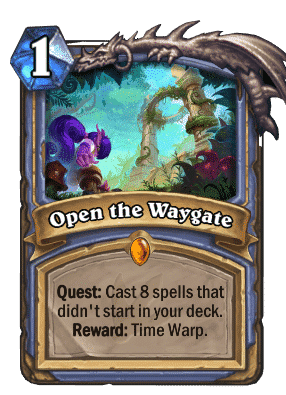
Time Warp Mage gets its namesake from the card Time Warp, the reward of the Mage quest Open the Waygate. The Mage tries to complete the quest quickly to pump out either Flamewakers, Arcane Giants, or both, and try to kill their opponents in the extra turn allowed. Archmage Vargoth is sometimes used to give the Mage another turn to comfortably set up for lethal.
Time Warp Mage reclaims the position of the best deck in the format. Nerfs to Pirate Warrior and Odd Demon Hunter have significantly improved the deck’s matchup spread and it can now more easily highroll Aggro opponents, while still crushing slow decks. The obvious increase in Discard Warlock’s presence is not very concerning as the matchup is more bearable. Jade Druid with Barnes build can also have good results with massive Kael’thas turns in mid game. Other than that, the deck is very difficult to counter. Most of the matchups are close to even or favored, some being free wins (e.g. Reno Priest). There were no new notable changes in the decklist, with some decklists opting for Starscryer as another cycle card.
Time Warp Mage continues to be the bane of the Wild format. Unless a huge portion of the ladder starts playing Pirate Warrior, it will continue dominating the meta. Let’s hope the new expansion brings us sufficient tools to fight this deck, otherwise only nerfs can save Wild.
Please find discussions regarding how the new cards will impact Time Warp Mage and Mage as a whole in Class Meta Ranking.



Even Shaman
Ranked: 2 (+4)
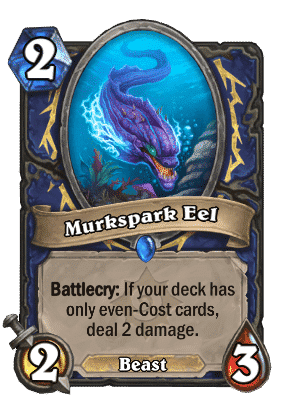
Even Shaman is the midrange deck that gets its name from playing only even-costed cards. Powered by Genn Greymane, the Even Shaman can spam early totems to power up highly-synergistic cards like Vessina, Thing from Below and Draenei Totemcarver. The deck overwhelms opponent in the mid-game with overstatted Overload card which can activate many high-tempo cards such as Likkim and Thunderhead.
Even Shaman has been unaffected by the nerfs and has risen to the Top of Tier 1, just behind Time Warp Mage. There are far fewer weapons now that the population of Warrior and Demon Hunter has dwindled, which means the Shaman can more easily establish a board in Aggro matchups. One of the most difficult matchups, Reno Priest, has been affected by Dragonqueen Alexstrasza nerf and has a smaller presence on ladder. These developments has reinforced Even Shaman’s excellent matchup spread and push it near the top of the meta. There have been no notable new additions to the deck.
Even Shamans who properly manage their resources are a force to be reckoned with. It is a great choice for the ladder and will certainly remain in this position until the new expansion. The future looks promising as well. One of the newly revealed cards—Lightning Bloom—will enable insane highrolls, such as a 4 mana 7/7 on Turn 1 when going second.
Please find discussions regarding how the new cards will impact Even Shaman and Shaman as a whole in Class Meta Ranking.


MID
Pirate Warrior
Ranked: 3 (-2)
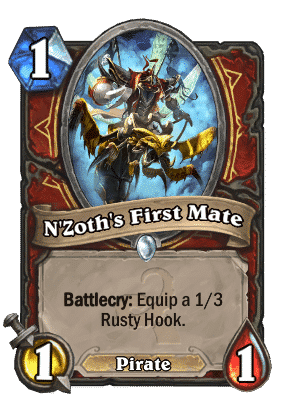
Pirate Warrior is a weapon-based aggro deck that relies on a strong early game Pirate synergy to create recurring damage with pirates and weapons. Ship’s Cannon into pirates provide consistent damage, while the Warrior is also capable of cheesing wins with late-game chargers like Leeroy Jenkins and Kor’kron Elite.
Pirate Warrior has been dethroned from the position of the best deck in the format due to the recent nerfs. Corsair Cache now only increases durability of weapon by 1, without boosting the attack. While Ancharr remains an excellent draw engine, it will be now a lot more difficult to control the board, as 3 is such an important breakpoint. It is especially relevant against Time Warp Mage, where it can no longer be used to remove Questing Explorer, while needing two upgrades in order to remove Flamewaker and Luna. The decrease in damage also slows down pressure on the life total, which gives the Mage player more breathing room while completing the quest. However, the deck is still extremely strong into Mages among other decks, and recent meta developments have caused lesser presence of Ooze on the ladder. For those reasons, it still sits comfortably in Tier 1.
Even though one of the staple cards of the deck has been nerfed, Pirate Warrior remains a dominant force in the Wild meta. It is certain it will remain in this spot, at least until the new expansion release. However, people are less keen on trying a version with Livewire Lance, and are only climbing with an Ancharrr-only Pirate deck with an occasional Wrenchcalibur here and there.
Please find discussions regarding how the new cards will impact Pirate Warrior and Warrior as a whole in Class Meta Ranking.


Discard Warlock
Ranked: 3 (+7)
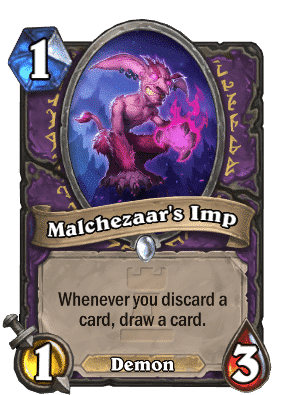
Discard Warlock is a midrange deck that aims to generate tempo through Discard synergies. While Discard cards typically sacrifice hand resources for immediate tempo, cards like Silverware Golem and Hand of Gul’dan can effectively negate these downsides. As such, the Warlock can create huge boards very early on, while Doomguard and Soulfire provides damage to finish off the game.
It is a good time for a deck that can get really aggressive early and push face damage with cheap minions and is not a Warrior or a Demon Hunter. Discard Warlock fits this definition perfectly.
Discolock’s potential to highroll is among the craziest in the format right now: the early mana cheat from Kanrethad, the draw from Hand of Gul’dan and cards like Nightshade Matron and Silverware Golem means this deck still has a good shot of snowballing the game against any deck. Whilst there is a large amount of RNG in your discards, managing your hand to capitalize on some predictable tosses can really improve your winrate. To achieve this, some decks are even playing Howlfiend so you’ll discard the exact card you want.
Discard Warlock’s main issue is its inability to play from behind. Luckily for the deck, Odd Demon Hunter has been plunging in popularity over the last of season. Illidan’s ability to remove all of our 2HP minions for 1 mana was a real challenge for this deck. As one of the few remaining counters to Time Warp Mage, Discard Warlock is enjoying its best meta position, which might end soon as the new expansion rolls in.
Or we might not even need to wait until then. If Even Shaman continues to creep up the rankings, its 1 mana tokens with 0 mana buffs could be just enough to push Discard back to being a highrolling tier 2 deck.


Combo Reno Priest
Ranked: 5 (-2)
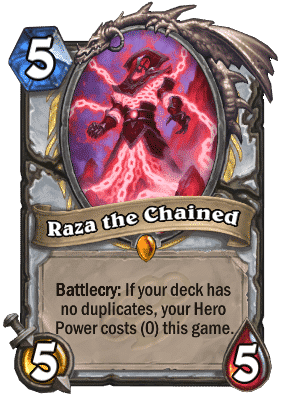
Combo Reno Priest is one of the most iconic decks in Wild Hearthstone. Popularized after the introduction of Shadowreaper Anduin, Combo Reno Priest assembles its combo by reducing its hero power to 0 and couple up with many cheap cards. Combo Reno Priest either plays Spawn of Shadows or Prophet Velen as its finisher, and it utilizes plenty of cycle cards to get there.
Combo Reno Priest has been marginally affected by the nerfs, with Dragonqueen Alexstrasza’s dragons now cost 1 mana. This makes her a pretty weak tempo play and much worse fuel generator for the Spawn of Shadows OTK, and renders her a prime candidate for a cut. Potential replacements include Jepetto Joybuzz (more card draw and discounts), Emperor Thaurissan (mana discount), old Alexstrasza (powerful effect and dragon activator), or just another cheap spell.
But it’s not so much the nerf that pushed the deck down the tierlist. The rise of Time Warp Mage is a big problem, as the matchup is extremely difficult. However, as a good portion of the meta is Aggro (in an attempt to counter Time Warp Mage), Reno Priest can find a lot of success with its strong control tools.
Please find discussions regarding how the new cards will impact Reno Priest and Priest as a whole in Class Meta Ranking.


LOW
Control Cube Warlock
Ranked: 6 (-2)
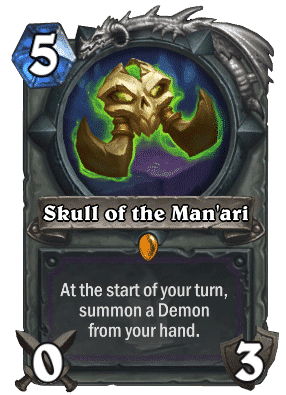
Control Cube Warlock is a specific variant of the Cube Warlock family. This slow Warlock deck plays many slow Deathrattle cards that can gain value from Carnivorous Cube and N’Zoth, the Corruptor. Rather than trying to get on board early, the Warlock defends in the early game with reactive spells like Defile and Dark Skies, before cheating out demons or outvaluing their opponent.
Control Cube Warlock has been left untouched by the nerfs, but it continues to decline in performance. The meta has shifted to include more Combo decks like Time Warp Mage and Malygos Druid, which are a real struggle for Gul’dan. The rise of Discard Warlock is another big issue, as this deck gets on board very fast and plays minions which are resistant to Defile and Dark Skies. On the other hand, there is a big improvement in the Odd Demon Hunter matchup, as they no longer have access to Warglaives. Ooze is less common in the meta now, which makes getting value from Skull much easier.
Nevertheless, a Skull on curve is still backbreaking for many decks and quadruple N’Zoths give it unmatched late game value. It’s unlikely it will become better without new powerful support cards being printed. For now, players can only work with what they have. Some top legend players have tried to play Dirty Rat to counter combo decks, as it can remove a combo piece along with Plague of Flames. Others have added in an extra copy of Expired Merchant to cheese out opponents in the late game.
The deck has fairly balanced matchup spread, but don’t expect free wins playing it. For these reasons, it drops to bottom of low Tier 1.

Big Shaman
Ranked: 7 (+7)
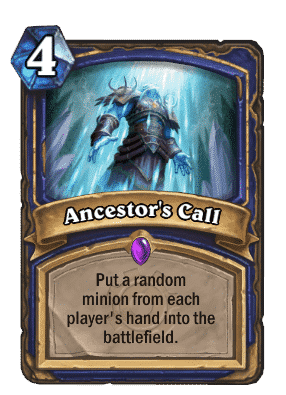
Big Shaman is a control deck that gets its name from cheating big minions. Ancestor’s Call, Muckmorpher, and Eureka! are essential to the strategy, as they allow big minions like Y’Shaarj and Scrapyard Colossus to enter play way earlier than they should. Other than that, the deck plays plenty of healing, AOEs, and removals for survival.
Big Shaman has received tons of support in Ashes of Outland and finally has tools necessary to be a strong performer in the meta. The most important new inclusion is Scrapyard Colossus. It offers only 4 points of combined health less than Voidlord, but has a much higher attack, which makes it an incredibly strong minion when cheated out in early turns. It also synergizes extremely well with Muckmorpher, as the Deathrattle part is not affected by the stat reduction. Other additions are the new spells. Serpentshrine Portal and Torrent provide Big Shaman with efficient removal in early turns, while Vivid Spores allow sticking threatening boards against Control decks. The ability to cheat out Scrapyard Colossus and Walking Fountain, in conjunction with an efficient removal package, makes Big Shaman a very strong performer against Aggro decks. Ancestor’s Call is a key card in Big Shaman, as it can win the game on its own by cheating out an Y’shaarj or forcing an early Aviana. Surprisingly, the matchup against Time Warp Mage is fairly good—Scrapyard Colossi with Ancestral Spirit and Vivid Spores are very hard to break through for the Mage, while threatening opponent’s life total at the same time. The new powerful card additions warrant completely moving away from Reincarnate and smaller Deathrattle minions.
New cards and the abundance in Aggro decks have significantly boosted Big Shaman’s position. Its main issue is bad matchup into Reno Priest—Psychic Scream, Mass Dispel, and Zephrys are backbreaking for the Shaman player. It can also sometimes lose to some inherent inconsistencies—for example, pulling the wrong minion with mana cheat spells or having the first few threats answered and being left with no more ways to get on board. Silence and transform effects are very effective against Big Shaman, in case it becomes a common matchup. As long as meta features a high number of Aggro decks, Big Shaman will remain relevant on ladder.

TIER 2

HIGH
Odd Demon Hunter
Ranked: 8 (-3)
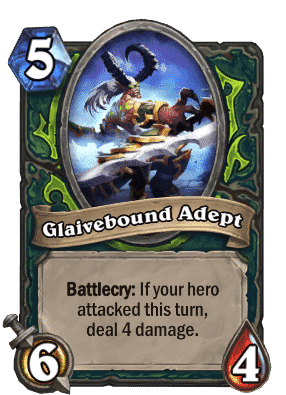
Odd Demon Hunter is a hyper-aggro deck from the newest class in Hearthstone—Demon Hunter. With a plethora of odd-costed early minions that synergizes well with the 1-mana hero power, the deck tries to overwhelm its opponents in the early game. Battlefiend, Lowly Squire, and Satyr Overseer are a few staples in the deck, while Glaivebound Adept and Priestess of Fury serve as finishers.
At this point, we’re not even surprised if another Demon hunter nerf patch will be delivered the night before the new expansion. Odd Demon Hunter is officially knocked out of Tier 1. Warglaives were one of the best cards in the deck and they are no longer playable. In addition to that, Metamorphosis has seen a whopping 20% reduction in damage, which makes it a lot worse when it comes to board control, and is less likely to finish off opponent behind the taunts. As such, Control matchups are a lot harder now, as the deck has less access to direct damage and overall lower card quality.
But Illidan still found a way, somehow. As Warglaives were extremely strong at swinging back board control, the new builds focus more on early game minions in order to secure the board control. There also been some experimentation with spell generating cards like Cobalt Spellkin (great spell pool) and Vulpera Scoundrel (not recommended due to very low tempo and inconsistency). There have even been attempts at slotting Inspire cards like Kvaldir Raider and hero power spammer like Auctionmaster Beardo too. Either way, Demon Hunter is short of about 6 to 8 good cards to fill up deck slots.
Odd Demon Hunter is clearly the biggest loser of the nerf patch and will likely stay in Tier 2 until the new expansion. The deck remains to be a solid choice for ladder, however it doesn’t do anything particularly unfair anymore.
Please find discussions regarding how the new cards will impact Odd Demon Hunter and Demon Hunter as a whole in Class Meta Ranking.



Galaxy Reno Mage
Ranked: 9 (-2)
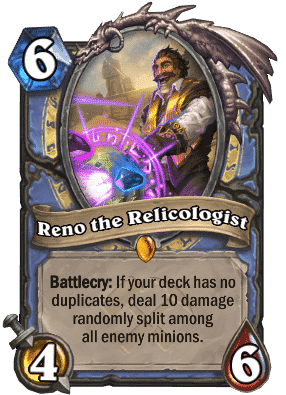
Galaxy Reno Mage is a midrange Highlander deck that relies on not having duplicate cards to activate power spikes such as Reno Jackson, Reno the Relicologist, Kazakus, and Zephrys the Great. Galaxy Reno Mage plays a heavy minion package with Luna’s Pocket Galaxy to overwhelm the opponent with 1-mana, high-value minions in the late game.

MID
Secret Mage
Ranked: 10 (-1)
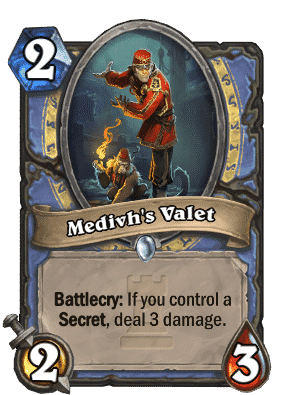
Secret Mage is a variant of Aluneth Aggro Mage. It seizes control of the board in the early game by playing discounted secrets along with highly synergistic secret build-around cards. The deck has the ability to both tutor secrets and deal burn damage, while Aluneth provides a way to utilize all of its value in the most tempo-efficient manner.

Jade Druid
Ranked: 11 (+1)

Jade Druid is a Control-Fatigue deck that aims to outlast its opponents by generating infinite Jade Golems. Jade Idol allows for this Fatigue-heavy playstyle, while access to various stall cards and board clears like Malfurion the Pestilent, Poison Seeds, Ferocious Howl, and Spreading Plague means the Druid can often comfortably get there. The deck reloads by lategame card draws such as Ultimate Infestation and Overflow. Jade Druid can comfortably go to fatigue, but oftentimes it just wins by surviving.
Jade Druid has been hit in the recent nerf patch. Fungal Fortunes now costs 3 mana, which means the Druid’s turn 2 is once again bad. The card is still good though, and it will continue seeing play in this archetype. However, it turns out Jade Druid actually benefited from the patch, as the metagame shifted more towards Aggro and Time Warp Mage. The deck performs well against Aggro and the nerfs to Warglaives made Odd Demon Hunter matchup extremely favorable, since they no longer have an efficient answer to Spreading Plague. In the case of Pirate Warrior, the decrease in weapon damage is also great news, as huge Ancharr has been always the biggest threat in the matchup. Rise of Time Warp Mage’s popularity may seem like bad news for Jade Druid—however, a solution has been found. Cutting Stalladris/Yogg in favor of Barnes gives the Druid player the ability to very consistently pull off massive Kael’Thas turns to cripple the Mage’s initiative. This forces them into defensive position, preventing them from chipping down the Druid’s armor with minion damage. Discard Warlock matchup also improves drastically with this new version. Barnes build is a bit weaker in late game scenarios, especially against Cube Warlock, but it shines against the most common meta decks.
Jade Druid turned out to be the winner of the nerf patch, even though one of their best card has been hit. The Barnes build performs consistently against both Aggro and Time Warp Mage. However, matchups against slow decks took a hit—not having access to Stalladris or Yogg makes Cube Warlock and Reno Priest harder to deal with. Jade Druid will likely remain a solid choice for ladder until the new expansion hits.
Please find discussions regarding how the new cards will impact Jade Druid and Druid as a whole in Class Meta Ranking.

Egg Cube Warlock
Ranked: 12 (-4)
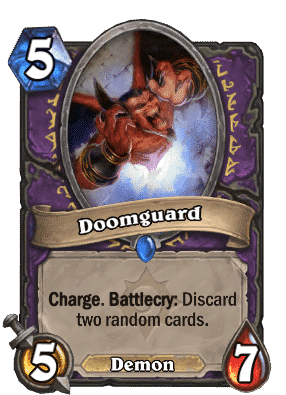
Egg Cube Warlock is a specific variant of the Cube Warlock archetype. It uses early eggs to control the board with highly synergistic cards like Plague of Flames and EVIL Genius. In the later stages, it transitions into a heavy demon package with Voidlord, Doomguard, Mal’Ganis, and Skull of the Man’ari.
After the balance changes, Egg Cubelock—similarly to its brother deck Control Cubelock—is finding itself in a more suitable meta than before. However, the edge Control Cubelock has over this deck is still clearly visible: Dark Skies is a great clear that resets board for the turn 4 onwards for Voidcallers and Skull to come online more easily and it’s not exactly the card you want to play in this scrambled deck. For this reason, contesting boards with Eggs + Plague of Flames/EVIL Genius is an option Warlock players aren’t opting for. But the pressure that can be exerted upon slower foes like Reno Priests through Eggs and the extra copies of Doomguards this deck chooses to play shouldn’t be underestimated either.
One of the cards in the upcoming expansion could be a huge help to this deck: the Priest-Warlock dual legendary Disciplinarian Gandling has great synergy with the eggs, as well as “converting” the lackeys generated from EVIL Genius into 4/4’s. Warlock’s new class egg doesn’t seem as exciting in this deck at first glance, with the currently existing 2-drop eggs leaving bulkier bodies behind them; nevertheless, it’s still a card that should be on the radar.

Malygos Druid
Ranked: 13 (+18)
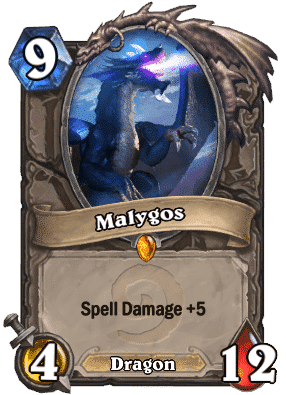
Malygos Druid is a combo deck that revolves around cheating Malygos onto the board and dealing overwhelming damage to the opponent. Several cards can enable a very cheap Malygos, including Aviana and/or Dreampetal Florist.
Malygos Druid managed to avoid the nerf hammer and shot up in the tierlist to become one of the best Druid decks. Even though the deck is still weak to Aggro, the Warglaives nerf siginificantly improves effectiveness of Spreading Plague, while lower weapon damage from Pirate Warrior may allow just enough time to stabilize. The deck is extremely deadly to any slow strategies, as it can output huge damage (100+ even, thanks to Sathrovarr), while being able to tutor the combo with Juicy Psychmelon. Dirty Rat can be an issue, and the increase in deck disruption might prove deadly for the deck. A rise in Discard Warlock’s popularity is also a source of concern, as this particular Druid build doesn’t have effective tools to deal with the early snowball.
Malygos Druid remains an extremely polarizing deck. It can also be inconsistent at times, if Juicy Psychmelon is not drawn. For those reasons, it sits in the middle of Tier 2 for the time being. It is unlikely to become better without new powerful cards from the new expansion, like Lightning Bloom for example.
Please find discussions regarding how the new cards will impact Malygos Druid and Druid as a whole in Class Meta Ranking.


Linecracker Druid
Ranked: 14 (RETURNING)
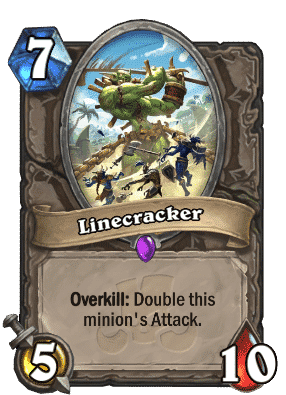
Linecracker Druid is a Combo deck that capitalize Linecracker’s notorious synergy with BEES!!! to buff it to 1280 attack, then casting Earthen Scales on it to gain 2563 Armor. After the Combo is executed, the Druid basically wins the game barring extreme tech choices or anti-fatigue measures.
Linecracker Druid has made the jump from a meme deck to a solid choice within the meta, concluding the glorious comeback of Druids. Since the release of the eponymous card, players have been using it in combination with BEEEES!!!, Earthen Scales, and some sort of mana reduction to attain over two thousand armor. Due to the number of cards required for this combo, it has stayed mostly in the meme tier, but because of the powerful draw card Fungal Fortunes, Linecracker Druid can consistently cycle their deck to get to the insurmountable armor total. Lists are now running two copies of Linecracker, Emperor Thaurissan, and Floops Glorious Gloop to ensure multiple possibilities to complete the combo. This way an unlucky Fungal Fortunes or a buried combo piece are less likely to be game-losing.
Against aggro, Linecracker Druid is quite strong, with access to the full druid defensive package and extra removal and healing in the form of BEEEES!!! And Earthen Scales as a full 2000 Armor is not needed to close out the game. Against slower strategies, combo disruption like Dirty Rat and Skulking Geist have become relatively common. While both these cards can end the game on the spot, there is always the slim chance that a Linecracker can stick to the board which can lead to a sneaky lethal with BEEEES!!!. The Combo matchups like Malygos Druid and Quest Mage are both quite winnable for Linecracker Druid, both coming down to a race to see which deck can assemble their combo first.
While the deck does have solid matchups and a well-refined list, it can still struggle to match the consistency of the tier one decks, landing Linecracker Druid in a respectable position on the tier list in Mid Tier 2. It’s quite a shame that Fungal Fortunes has been nerfed right before the report is released, or we could have seen Linecracker eyeing for that sweet Tier 1.
Please find discussions regarding how the new cards will impact Linecracker Druid and Druid as a whole in Class Meta Ranking.


Time Warp Reno Mage
Ranked: 15 (+4)

Reno Time Warp Mage is a Highlander deck that occupies the spot between Reno Mage and Time Warp Mage. On one hand, it retains the powerful extra turn win-condition provided by the quest. On the other hand, it uses Kazakus, Reno the Relicologist, Reno Jackson, and Zephrys the Great as stabilizing tools or extra value.
The nerf to Open the Waygate has affected Reno Time Warp Mage way more than its non-Highlander cousin, making it even weaker than before. The only new addition in the Ashes of Outland is Evocation. While strong, it is far less powerful than in regular Time Warp Mage, due to hand size issues and no access to Sorcerer’s Apprentice. Reno Time Warp Mage only beats slow Control decks, however, thanks to powerful highlander cards, it does not lose very badly to anything.
The main redeeming quality of the deck is a better matchup against aggro (though still unfavored) than its faster twin. Unfortunately, it does not offer much more at the moment. The Dragon package provides a good amount of value, which lets Reno Time Warp Mage play out similar to regular Control decks, however, Galaxy Reno Mage does this job much better. It cannot deal effectively with early highrolls from other decks. It is worth noting that the maximum damage output is higher than for regular Time Warp Mage, although it requires extensive setup. This may be potentially useful against decks that stack very high armor.


Odd Paladin
Ranked: 15 (0)
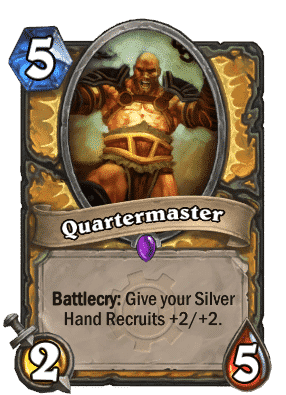
Odd Paladin is a aggressive-midrange deck which gains its name for playing only odd-costed cards. Powered by Baku the Mooneater’s Start of Game effect, the Paladin can summon two 1/1 recruits at any stage in the game. This gives the Paladin an incredibly consistent board presence that synergizes with cards like Quartermaster, Warhorse Trainer, and Steward of Darkshire.
Odd Paladin is a deck that’s all about having initiative and the latest patch brought down opponents that could outpace the deck. Despite that, Warlocks and Priests are equipped with so many board clears, consistently sticking a board—even with the help of cards like Beaming Sidekick and Never Surrender!—is harder than ever; and aggro matchups haven’t changed that much except for not having to play around Warglaives.
Nevertheless, all Odd Paladin needs is one turn of inaction from the opponent to checkmate your opponents and this puts the deck in mid tier 2. Its consistency is insane, but consistently being above average instead of having insane highrolls isn’t what the metagame is looking for.
Please find discussions regarding how the new cards will impact Odd Paladin and Paladin as a whole in Class Meta Ranking.

LOW
Bomb Warrior
Ranked: 17 (-6)
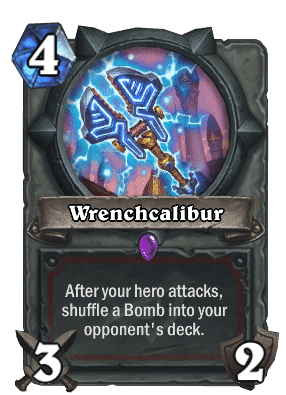
Bomb Warrior is a midrange deck that relies on damage output from cards that shuffle bombs into its opponents’ decks. It aims to seize the board with early cards like Risky Skipper and Bloodboil Brute and hold out until the opponent dies from taking bomb damage. There are many different supporting packages in addition to bombs, but the most popular version plays an Enrage package.
Bomb Warrior in its current form is an exciting deck. Bomb Warrior has seen fringe play before, but the deck struggled to handle more aggressive decks and it had trouble putting on enough pressure to beat the slower decks. With the release of Risky Skipper, Bomb Warrior has gained both an oppressive anti-aggro tool and a draw engine to allow for massive card draw with Battlerage. The deck is quite similar to its standard counterpart, but it does gain a boost with Town Criers, Zilliax, Loatheb, and Sn1p-Sn4p. Skipper and Armorsmith to clear the board while gaining massive amounts of Armor in 1 turn and life-gain turns against aggro while using the bombs and midrange minions to pressure down and control or combo decks.
Unfortunately, the meta isn’t in favor of Bomb Warrior anymore. Aggro decks that can be swept off with a single Risky Skipper are gone, and the boogeyman Time Warp Mage has returned. Decks like Cubelock and Quest Mage have little trouble answering the Midrange bomb minions, and they can both close out the game before they draw enough bombs to have their life total threatened. Druid can also be an uphill battle for Bomb Warrior as their immense armor gain outlast the damage the bombs can deal with. For these reasons, Bomb Warrior has slipped to the bottom of Tier 2.

Mech Handbuff Paladin
Ranked: 18 (-1)
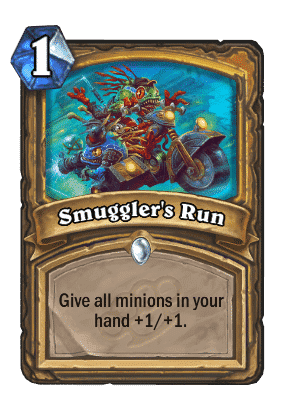
Mech Handbuff Paladin is a premier aggro deck that maximises the highroll potential of efficient mech and handbuff cards. Early handbuff cards like Smuggler’s Run and Grimestreet Outfitter buffs up other mechs, who retain their buffed stats when magnetized on existing minions. Mechwarper and Galvanizer allow for really early swarm boards.
Friendship ended with Mechwarper, now Concede button is my best friend. Mech Paladin is still a great deck to beat Mages, though it feels like that’s all it can do these days. As it is an older deck that has insane highroll potential, it’s losing in popularity to the newer Discard Warlock, which has arguably more absurd highrolls than Mech Paladin. Mech Paladin’s weaknesses are more exploitable, as it is prone to Silence and has no direct damage without a mech to magnetize on, unlike Discolock which has Soulfires, Doomguards and Fists of Jaraxxus.
For the foreseeable future, it seems like Mech Paladin is a deck that has been outclassed, and sadly there is no support for it in Scholomance Academy. Nevertheless, it’s not a bad deck by any means and is extremely punishing for opponents who have an awkward hand.

Tempo Galakrond Warrior
Ranked: 19 (-7)
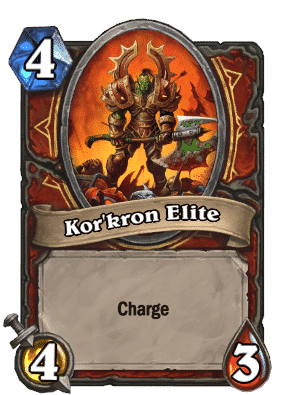
Tempo Galakrond Warrior, as the name suggests, is a midrange deck that wins by outtempoing the opponent in the mid-game. Apart from some key Tempo cards like Kor’kron Elite, this version of Tempo Warrior relies on the Galakrond core that keeps recharging the hero’s attack as it piles up its Invoke count. Tempo Warrior can secure the victory by playing overstatted minions that are drawn from Galakrond on top of its previously generated tempo.
The days of Galakrond is nearing the end. The nerf to Corsair Cache means that it’s no longer worth playing in Galakrond Warrior, at least not over Forge of Souls. Galakrond Warrior’s playrate is suffering, as players are moving away from it to Pirate Warrior. Galakrond Warrior, even with cards like Scion of Ruin, cannot compete as well on board compared to Pirate Warrior. You’ll find yourself losing board more often than not against the better decks, and your power turns aren’t really enough to come back into the game.
Transfer Student is being playtested in Galakrond Warrior, and has helped shoring up the deck’s early game. The card isn’t an universal mainstay as in Reno Hunter, though, but rather a creative choice that can be easily omitted.

Mecha’thun Warlock
Ranked: 20 (-4)

Mecha’thun Warlock is a Control-Combo deck that revolves around cycling until you run out of cards and finish off your opponent with Dorian and Plot Twist into Cataclysm, with an Emperor tick on the former two. Older versions of this archetype utilized a Voidlord package for survival, but it has been mostly abandoned in favor of a turbo cycle version with several cheap draw minions and Plague of Flames.
Mecha’thun Warlock has been unaffected by the nerf patch and it would seem like it can get back into the meta. However, Time Warp Mage’s rise in popularity quickly crushed this dream. The matchup remains to be one of the most onesided experiences you can have while playing Hearthstone. The little ray of hope is improvement of the Aggro matchups. It is now a bit easier to survive and stabilize against Odd Demon Hunter and Pirate Warrior, although top Aggro decks are still an issue. The deck remains to be extremely strong against slow strategies and Hemet on curve highroll can steal the game off any deck. There are no notable new developments for this archetype.
Mecha’thun Warlock continues its decline in the meta, due to Time Warp Mage’s resurgence. It will likely stay like this, unless it receives extremely powerful cards in the new expansion.


Aggro Rogue
Ranked: 21 (-4)

Aggro Rogue is an aggressive deck that relies on cheap minions (usually pirates) to take control of the early game. The deck traditionally utilizes efficient damage cards like Eviscerate and card draws like Myra’s Unstable Element to finish the job.
Aggro Rogue builds utilizing Stealth packages look like the best right now, with Ashes of Outland featuring a lot of good Stealth cards like Spymistress, Ashtongue Slayer and Greyheart Sage. The power of these cards combined with One-Eyed Cheat and Skyvateer bringing their Pirate buddies along with a very lovely Cannon make this deck a force to be reckoned with. Explosive starts and efficient draw cards make this deck very good at killing opponents, especially when they don’t want to react and do their own thing like Quest Mage does.
Rogue has been a suffering class in the Wild format for a while, and there hasn’t been a lot of experimentation done with the class as of late. It didn’t help that the SMOrcing community of Wild Hearthstone is currently busy riding on the Discolock train: as a result of both of these factors Stealth Rogue is seeing fringe to no play. The Odd Demon Hunter matchup became rarer, Shaman matchups are getting more common (equals a higher chance you lose to well-timed Maelstrom Portals), people are experimenting with Risky Skipper in Wild (mainly with DMH and Galakrond) and Stealth Rogue is being pushed down. Not all meta trends are looking doomed for the deck though, Quest Mage and Maly Druids are on the rise and Pirate Warrior is currently going through the nerfed deck syndrome with players reluctant to play it. One matchup that this deck should be okay into is the new popular kid on the block with tools such as Backstab, Spymistress and Hooked Scimitar being great at removing pesky demons, and it can keep up on draw through Sage and Myra’s.
Speaking of card draw: apparently Secret Passage is going to be a card. And it doesn’t take a genius to see the power of a better Soularium in a class such as Rogue. It just provides such fuel at so cheap a price and we expect it will renew interest in fast-paced Rogue decks of all fashion. And the new legendary is similar to Piloted Shredder equipped with a better Deathrattle and Stealth. Nowadays Piloted Shredder might just be a nostalgic card from the good ol’ Secret Paladin curve, but this deck likes having good Stealth cards and might welcome the Infiltrator with open arms.


Murloc Paladin
Ranked: 22 (-2)

Murloc Paladin is an aggro deck that relies on Murloc tribal synergies to flood the board in the early turns. Seizing control from Turn 1 with cards like Murloc Tidecaller is essential to chain buff the Murlocs and finish the game with Murloc Warleader or other board aura. Murloc Paladin also benefits from strong Paladin spells like Tip the Scales, Call to Arms, and Crystology.
“Mgrlmglmglmgl!” the Murlocs were shouting as Sir Finley read them the patch notes at Uther’s bakery for amphibious creatures. (Sungill sadly couldn’t be there for reasons) The mass murdering weapon was no longer in the hands of the “1 mana deal 2 hero power” guy. “With the murloc hater, vengeance lover Illidan crippled, we can conquer the ladder again!” they thought, as they marched to their inevitable end.
Although Murloc Paladin got some cards that allowed them to regain lost tempo such as Underlight Angling Rod and Tip the Scales, in its core lies the snowbally nature of Murlocs. It’s very hard to snatch wins once you lose board control. For this reason, nerfs to Odd Demon Hunter were a blessing for Murloc lovers. Things are looking good for this deck, as Mages and Druids are gaining popularity, and Murloc Paladin tends to do well against both classes (even in the days of pre-nerf Innervate and 5 mana Spreading Plague, Murloc Paladin was one of the strongest counters to slow Druid). But even if Murloc Paladin was to rise to popularity to counter them, it’s really easy for the metagame to turn hostile against the fishmen with decks like Even Shaman, and for that reason Murlocs find themselves in low Tier 2 in this report.
Please find discussions regarding how the new cards will impact Murloc Paladin and Paladin as a whole in Class Meta Ranking.


Togwaggle Druid
Ranked: 22 (-1)
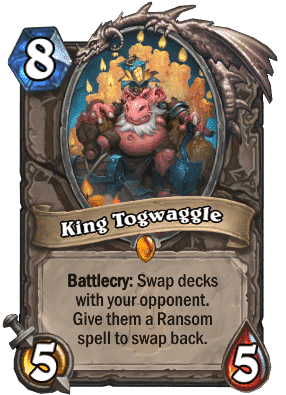
Togwaggle Druid refers to any combo deck that uses the interaction between Togwaggle and Azalina with the aim of disabling the opponent’s access to more resources. Togwaggle Druid traditionally plays Aviana and Kun as enablers for their combo turn, but the release of Imprisoned Satyr and Jepetto Joybuzz has made it possible to swap decks without playing Aviana first.
Unlike the other two combo Druid archetypes in our report, Togwaggle Druid has not shared the same success and rise in popularity. Players have seemingly decided that ending the game outright with either an insurmountable amount of armor or burst damage is preferable to switching decks with the opponent. Togwaggle Druid does have a smaller combo package compared to Malygos Druid, allowing for space to play the Oaken Summons package and removal spells such as Poison Seeds and Starfall. This comes with the drawback of a less powerful combo turn and no Kael’thas blowouts as most lists are not suitable for him.
Taking a look at the powerful decks in the meta, it is apparent why the Malygos combo is preferred to the Togwaggle Combo at the moment. Decks like Cubelock and Big Shaman will build boards that Togwaggle Druid does not have the tools to answer. The Togwaggle combo is also slow enough that the deck will find itself just as susceptible to Time Warp Mage as any other Druid archetype. The prevalence of combo disruption in the meta is another knock on the deck. A Dirty Rat can end the game on the spot when it hits the right target, and none of the combo pieces in Togwaggle Druid can win the game if they stick to the board as Malygos can.
In the right hands, Togwaggle Druid can still find success, as demonstrated by Hijodaikan getting rank 1 legend with the deck in early July. But for the most part, the extra removal and Oaken package are not enough to justify a weaker combo in the current Meta, leaving the deck in low tier 3.

Token Druid
Ranked: 22 (+3)

Token Druid is a deck revolving around generating wide boards of minions with spells multiple times until the opponent is unable to remove it. Then, it uses cards like Savage Roar and Branching Paths to deal heavy damage to the opponent, usually killing them outright. It features standard Druid defensive package and strong card draw in order to consistently generate boards of tokens. Soul of the Forest is used to protect tokens from board clears.
Token Druid has been affected by the nerfs, but not as badly as Pirate Warrior and Odd Demon Hunter. Even though Fungal Fortunes are a little harder to cast now, being safe from Warglaives makes establishing a board a lot easier. Spreading Plague is much more powerful now and can carry entire games against top Aggro decks (excluding Even Shaman). However, the deck still remains to be very niche and doesn’t have a strong representation on ladder. Giving opponent one turn to react to token boards is just too fair of a strategy to dominate Wild format, even if Token Druid is pretty darn exception at swarming board again and again.
Token Druid has become a little better after the nerfs, although it still doesn’t have a strong foothold in the meta. The deck can be teched with the Oaken Summons package in order to improve aggressive matchups, and this is the approach we recommend.
Please find discussions regarding how the new cards will impact Token Druid and Druid as a whole in Class Meta Ranking.


Darkglare Warlock
Ranked: 25 (NEW)
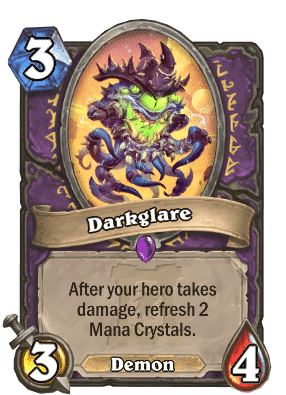
Darkglare Warlock is a self-damage Aggro deck with Darkglare serving as the centerpiece. Darkglare allows for plenty of mana cheat that helps the deck to swarm the board with overstatted minions from as early as turn 2. Molten Giant is included as the ultimate late-game, which can be dispatched from Turn 4 onward due to the massive amount of self-inflicted damage.
There’s yet another deck popping up in the Chinese server, and boy does this one have a lot of potential! Darkglare is a broken card; this is irrefutable, but the fact that the supporting card is okay enough to push it into Tier 2 is quite surprising. Neferset Thrasher, Flame Imp, and Wrathguard are quite possibly the biggest minions for their cost, and Darkglare can get them all on board if you’re willing to sacrifice a few hit points. Even if you don’t draw Darkglare, Molten Giants can finish the game for you.
There are plenty of glaring problems that keeps the deck away from the top tier, however. First, the supporting cards’ quality isn’t good enough. Cards like Crystallizer and Spirit Bomb feels like they’re in the deck to support Darkglare, as they’re hardly good enough on their own. Also, you will find yourself having a much harder time if you don’t draw Darkglare. Finally, there’s not enough draw for you to build a huge board right on Turn 2, even if you have the craziest opening. Looking at the new cards from Scholomance Academy, the third problem can be solved with Voracious Reader, and Raise Dead might be the solution for the first two.
Darkglare Warlock enters at the bottom of Tier 2. The deck as a whole is not yet strong enough, but Darkglare itself is a phenomenal card. It’s not often a card that has absolutely no synergy with Discard being toyed around in the archetype.
Please find discussions regarding how the new cards will impact Darkglare Warlock and Warlock as a whole in Class Meta Ranking.


Reno Hunter
Ranked: 26 (+2)
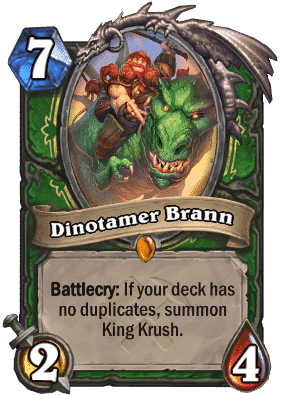
Reno Hunter is a Highlander deck that relies on not having duplicate cards to activate power spikes such as Reno Jackson, Dinotamer Brann, and Zephrys the Great. Reno Hunters are usually built pretty aggressively and revolves around playing either small beasts or big beasts. But generally, the Hunter’s gameplan involves much more pressure than other Reno decks.
You will find Hunters on ladder as frequently as the number of times Babbling Books decide the World Championships. But if you do run into an odd one, it’s most likely going to be a Reno Hunter. Reno Hunter is probably the only functioning Hunter deck right now, preying on aggressive strategies and using its powerful midgame to help combat control matchups.
The nerf to Dragonqueen Alexstrasza has made it noticeably slower in Reno Hunter because they can no longer tempo it out on 9 and play 2 dragons. Therefore, popular lists have replaced her with cards like Nagrand Slam to make up for the loss of late game. With the nerf to Pirate Warrior and Demon Hunter, we have now seen a rise in Quest Mage which Reno Hunter can fight with key secrets like Pressure Plate, Rat Trap and Cat Trick along with steady pressure from Eaglehorn Bow and Emerald Spell Stone. The deck is also awesome into Combo Druids, as Reno Hunters can consistently find Pressure Plate with Subject 9 to play the turn before they want to play Aviana. Reno Hunter does struggle to control wide boards because of its lack of board clears, so Cubelock, which is also seeing more play due to Demon Hunter nerf, can give this archetype a problem.
Please find discussions regarding how the new cards will impact Reno Hunter and Hunter as a whole in Class Meta Ranking.


TIER 3

Taunt Druid
Ranked: 27 (+17)
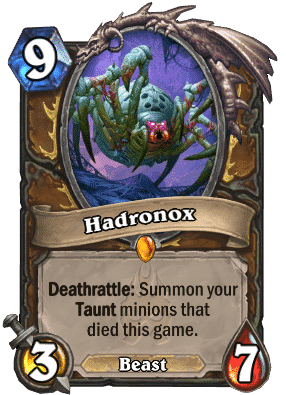
Taunt Druid is a slow Control Druid revolves around building walls of taunt to keep the opponent away from damaging your hero. The deck plays plenty of tough Taunts and bring them back with Hadronox and pseudo-Hadronoxes like Witching Hour, N’Zoth or, The Undatakah.
Taunt Druid is officially back, taking on a new form. The clunky N’Zoth and Witching Hour package is now cut in favor of Oaken Summons. Archmage Vargoth can still stop an Aggro deck on track really effectively, while removing Witching Hour allows for extra small taunts like Malfurion and Spreading Plague. It doesn’t mean that the deck had cut back on value; it had simply found a new, better value generator. With a couple deathrattles from Astral Tiger, Da Undatakah can shuffle himself back into the deck, allowing for unlimited value. This strategy is almost unbeatable for Warlocks and slow Warriors, and the Armor gain keeps Reno Priests out of range. Winged Guardian is one of the best taunt ever introduced, as it cannot be targeted by spells an summons another copy which also can’t be targeted by spells. With a single Guardian, Hadronox brings back two Guardians.
Taunt Druid is an especially strong against Control, but is not consistent enough against Aggro to get itself into Tier 2. However, the new Lightning Bloom can allow for the deck to cheat out big threat earlier, the same way Biology Project is functioning in the deck.

Inner Fire Priest
Ranked: 28 (-4)
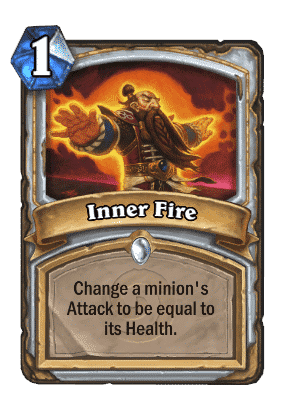
Inner Fire Priest is any variant of Combo Priest that uses its namesake card – Inner Fire – as the main win-condition. Utilizing high health cards like High Priest Amet and Deathlord, the Priest buffs them up with Power Word: Shield, Divine Spirit, and other cards to create a huge Inner Fire minion. Northshire Cleric serves as an excellent draw engine, and it can sometimes even draw the Priest a full hand in a single turn.
Inner Fire Priest has not seen much of a resurgence in the post-nerf meta. Two of the main cards holding the deck back, Warglaives and Ancharrr, both received nerfs which should allow combo priest a better chance at establishing board control in these matchups. Unfortunately, Inner Fire Priest still lacks the consistency to be a relevant part of the meta. When a solid early curve is with buffs to fill out the mid-game, Combo Priest feels like a solid deck, but far too often you will find yourself with a hand of spells or a hand of weak minions that will quickly fizzle. Even when a playable hand is drawn Inner Fire Priests threats can often be too easy to answer as most decks have some sort of efficient removal, stall or silence. Plague of Flames, Poison Seeds, Zephrys, Ray of Frost, Consume Magic, and Devolve are all prevalent cards in the meta that can stop Inner Fire Priest in its tracks. To increase consistency, Inner Fire Priest has tested with cards like Skydiving Instructor and Neferset Ritualist, but they haven’t yield much result.
There is some hope for the future relevance of Inner Fire Priest with some of the reveals from Scholomance. Please find discussions regarding how the new cards will impact Inner Fire Priest and Priest as a whole in Class Meta Ranking.


Reno Warlock
Ranked: 29 (0)
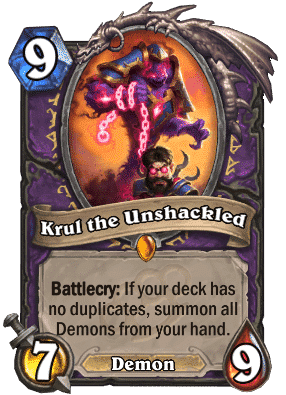
Reno Warlock is a Highlander deck that relies on not having duplicate cards to activate power spikes such as Reno Jackson, Kazakus, and Zephrys the Great. The Warlock core is different from other Reno decks in that it usually revolves around Demon synergies. There is a multitude of ways to build Reno Warlock, but not every Highlander Warlock will be listed under Reno Warlock. A Reno Warlock deck is listed under Renolock if the Highlander cards are a crucial part of their gameplan.


Kingsbane Rogue
Ranked: 30 (-2)
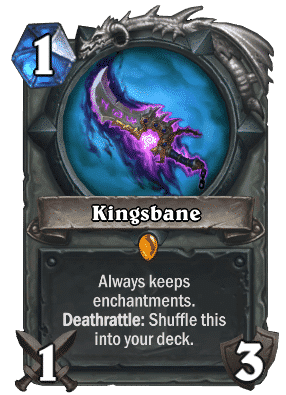
Kingsbane Rogue is a deck that revolves around buffing and redrawing its namesake card, Kingsbane, to create an infinite amount of damage that can eventually end the game. Kingsbane Rogue used to play a Mill package with Coldlight Oracle, but after the nerf to Leeching Poison, it has switched to an early aggressive Pirate package.
Although Corsair Cache and Warglaives of Azzinoth were nerfed, it wasn’t enough for people to comfortably drop Oozes from their decklists, which is bad news for Kingsbane Rogue enthusiasts. Nevertheless, we assume that Kingsbane Rogue is enjoying the new meta a lot more, as the bullying Warriors and Demon Hunters on the decline and Warlocks vulnerable to Sap are on the rise. This deck possesses a similar matchup spread to Stealth Rogue, however the sheer damage provided by swinging Kingsbane face every turn can decide games by itself in some matchups like Reno Priest.
Once again, Secret Passage is the most excitingly powerful card Rogue has received in a while. Going into the next expansion, it’s definitely a card that has the potential to revive this deck as well.
Please find discussions regarding how the new cards will impact Odd Rogue and Rogue as a whole in Class Meta Ranking.

Odd Rogue
Ranked: 31 (-6)
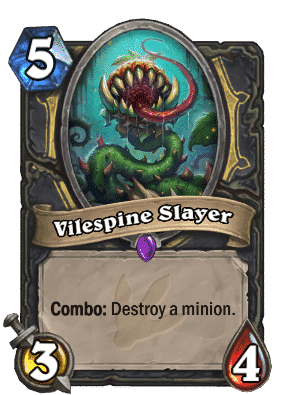
Odd Rogue is a tempo-midrange deck that gains its name for playing only odd-costed cards. Powered by Baku the Mooneater’s Start of Game effect, the Rogue gains access to a 2/2 weapon at any stage in the game. This gives the Rogue an incredibly consistent damage output as well as early board control and allows it to play a variety of synergistic Combo and Pirate cards.
Illidan’s claws have been dulled after his two separate cards got nerfed. This could’ve been a very good opportunity for Valeera to take up the Baku mantle from the betrayer, but as it turns out, Odd Rogue has more problems than simply being overshadowed by Odd Demon Hunter. Like we mentioned in the last report, Highlander decks are overall not very good matchups and the uptick in Cubelock’s playrate doesn’t help since you can’t just silence demons while cycling cards. It doesn’t help Odd Rogue that the deck is basically the same deck from last year and people got bored of playing it.
Although this deck doesn’t look all that hot currently, if you despise playing against Discard Warlock, a Poisoned Dagger on turn 2 is still one of the best answers in terms of board control. The matchups against Quest Mage and Even Shaman also look good for Baku, and Corsair Cache nerf was helpful for it as well. But even though Odd Rogue has okay matchups into half of Tier 1, they aren’t all that amazing; and the other half of Tier 1 is still very much a liability.
About Odd Rogue’s position in the meta going into the next expansion: we mentioned Secret Passage earlier and fortunately for the Mooneater, it’s an odd card! Doctor Krastinov also looks great for the deck, basically functioning as a Rush Captain Greenskin which can remove an extra body. Vulpera Toxinblade is also looking like a very solid 3-drop, functioning kind of similar to an aura version of SI:7 Agent.


Odd Warrior
Ranked: 32 (-6)
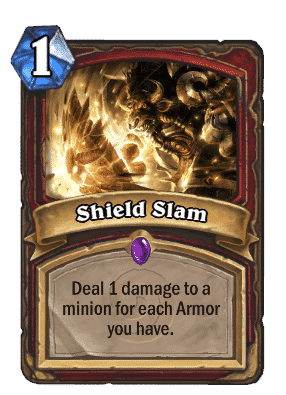
Odd Warrior is a reactive control deck that gains access to 4 extra armor every turn from Baku the Mooneater’s Start of Game effect. Odd Warrior can call upon some of the strongest removals in their arsenal in Brawl and Shield Slam, while their armor accumulation opens up synergies with various armor-related cards.
Odd Warrior has always been quite a polarizing deck with strong matchups against aggressive board based decks but it rarely beats the OTK combo or versatile Control decks that you see in Wild. When Demon Hunter began to gain traction in the format, Odd Warrior was the perfect deck to counter it. You could just tank up early and use your many AOE effects to clear the board and reset. However since the nerfs there are a lot less Demon Hunters around, and whilst its fine against Pirate Warrior you do find Time Warp Mage can break through the armor you accumulate before they combo, and Even Shaman and Reno Priest have the resources to keep resetting after you clear them. As a result of this, Odd Warrior has to include a few different win conditions depending on the build to counter whichever control decks are most common at that time.
The most popular win condition has always been Brann and Coldlight Oracle, which allows you to reload your hand and spend spells freely, whilst more importantly giving you an opportunity to mill key combo cards for your opponent. This is often understood by both players and will lead to decks that may normally play with a near full hand (most Reno or Warlock decks) spend resources inefficiently and leave hand space to try avoid this. Dr. Boom is a great value engine, but the unpredictability means its just not as effective as other control DK’s you’re likely to see (Anduin, Guldan). All of this leaves Odd Warrior in an awkward position where the things it does really well, other decks can also do but with less downsides. For now, there are better, and faster decks for you to ladder with.

Dead Man’s Warrior
Ranked: 32 (+34)
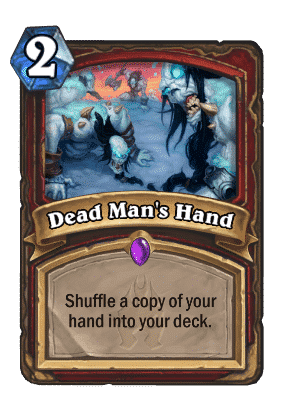
Dead Man’s Hand is a fatigue-style deck that cheeses out win by outlasting opponents, exhausting their resources, and cheating fatigue by shuffling unlimited cards. Brann and Coldlight are often used to refill the hand, while signature defensive cards like Brawl, Shield Slam, or Risky Skipper helps stabilizing until you get there.
Dead Man’s Hand Warrior is back under a new shell: Risky Skipper. It has allowed the deck to fend off Aggro regularly, something it hasn’t been able to do before. Ancharrr can tutor these as they are the only pirates in the deck, Dead Man’s Hand can also shuffle more Skippers into the deck to clear the board again and again while gaining armor with Armorsmith and Eternium Rover. Brann and Coldlight remains the main win condition against slow decks, but Zephrys is also included for extra value, and Dirty Rat oftentimes just mean an auto-win against Druids. You’d be surprised how often you get Zephrys to trigger!
Dead Man’s Hand Warrior’s main nemesis is the same one as many other slower decks: Time Warp Mage. That’s the one thing that’s keeping the Warrior away from the top two tiers. The deck might enjoy the new Aggro heavy meta that Scholomance Academy might serve up, especially with Lord Barov an excellent inclusion, especially when coupled up with Risky Skipper.


CLASS META RANKING

WARLOCK
RANK 1 – 517 POINTS

Warlock is still the king of Wild, despite overseeing an internal overhaul. Discard Warlock reigns as the deck of choice, replacing the veteran Cube Warlock, while Darkglare Warlock surfaces as another Zoo option, switching the class from a typically grindy one to an aggressive one.
Lesson learned—when you keep incrementally push something for every expansion, eventually, it will work. Discard Warlock is now the flagship archetype of Warlock, offering an explosive start that’s difficult to manage for any deck. Decks like Discard Warlock can be infuriating playing against, but are important to keep Time Warp Mage in check.
Darkglare Warlock operates on the same principle of churning out as much stats, as early on as possible. Darkglare, as a card, is so strong it can be slotted into an otherwise traditional Discard Warlock and the consistency hampering might still be worth the gains. Right now, the cards supporting Darkglare are still rather weak, but give it another expansion. Flesh Giant and Raise Dead have just been announced, after all, not to mention that new Voracious Reader to refill your hand after a Darkglare turn.
Cube Warlock still has enough resilience to withstand early Giant turns, while dealing with Aggro with their abundance of removals. We were actually prompted to move the deck to Tier 2 before the new nerf wave, but Odd Demon Hunter being gone was actually a significant boost. The Demon Hunter used to get through taunts rather easily with Warglaives of Azzinoth or Consume Magic. Right now, Cube Warlock still has trouble against Discard Warlock, but other matchups feel manageable at the least, especially now that the deck plays Dirty Rat against all the Combo Druids.
Meanwhile, Egg Cube Warlock is lagging behind. The early game Egg package is sometimes not enough to fend off aggressive aggro like Pirate Warrior or Discard Warlock, while the use of Taldaram over Dark Skies means one fewer option for early game removal. However, unlike Cubelock which didn’t get anything new, Egg Cubelock might tinker around with Disciplinarian Gandling to break their Eggs and gain more tempo on board.
Mecha’thun proves its longevity by simply replacing Bloodbloom with a new engine: Kael’thas Sunstrider. The deck can still combo pretty much around the same turn as the earlier version, and is still pretty much as strong. We are not sure how the deck will fare with an abundance of anti-combo being introduced, though.
Reno Warlock has a few upgrades that keeps it at the top of Tier 3, but it’s mostly reserved for veteran who are looking for an old-timey experience. There are still many people loving the deck, and they keep on refining it to keep it somewhat relevant in the meta. Malygos Warlock–on the other hand–is seeing no love despite its potential. Maybe people will realize that a concrete win condition on top of a Voidlord package is just good.
Even Warlock is not good at all right now, but things can change drastically comes next expansion. Raise Dead, Flesh Giant, and Brittlebone Destroyer are extremely strong inclusions for this archetype, and will slot in most versions seamlessly.
MAGE
RANK 2 – 476 POINTS
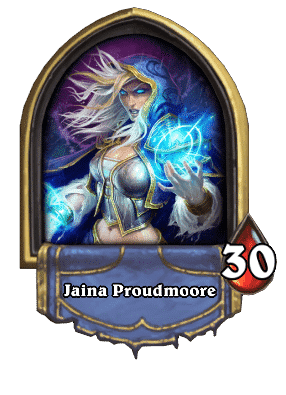
The nerf to Mage’s strongest counter decks has allowed the class to do what it hasn’t been able to do for the past month and take the meta by storm. Time Warp Mage is back at the top, while Control Reno Mage appears in Tier 1 for the first time. This is an impressive feat, considering Jaina only has five viable decks to boot with, with only two of them being played regularly on ladder.
The Open the Waygate nerf is comparable to a small pebble inside Time Warp Mage’s shoes. There are only a few cases where the extra spells matter, which are often when the Mage is having a subpar hand, most likely without Flamewakers, or when the Aggro deck has a really explosive opening, and the Mage needs one more turn to finish the game. The winrate of Aggro against Time Warp Mage is thought to be bumped up by a few percentages as a result, which is enough for clear counter decks to emerge. Right now, Pirate Warrior and all Paladins can still do the trick, but Discard Warlock seems to be the best deck to sport into Time Warp players. What’s scary is Time Warp might get even better, maybe back the mythical Tier 0 next expansion. Devolving Missiles might be its effective, low-costed answer to a wall of taunt, and the Mage can just generate the card if they don’t want to put it in their decks. However, there are plenty of tech options against the Mage available now, like Glide, Mindrender Ilucia, or Robes of Protection.
Open the Waygate nerf hits Reno Time Warp much harder than its non-Highlander cousin. It’s marginally more difficult for the Reno version to fulfill its 8-spell condition, as they have far fewer spell generators, and Evocation doesn’t work nearly as well with a much heavier hand. However, if the Reno Mage gets to the point it can complete the quest, it’s still as effective as ever. The deck is now placed within Tier 2 for this reason.
Meanwhile, Reno Galaxy Mage resurfaced as a counter to slower decks, while not losing much against Aggro. Galaxy Mage is a decent choice for ladder at the moment, especially if you are not seeing much Quest Mage. However, a sharp rise in the number of Time Warp Mage and Combo Druid has made the meta more hostile towards the deck, keeping it away from Tier 1. There won’t be any game-changing inclusions for Reno Mage, but Combustion will serve as a sweet early game removal, at least.
Secret Mage–both Highlander and non-Highlander–is an archeype that isn’t too hot in this meta. We’re getting to a point that many decks can actually survive a Turn 6 Aluneth, which makes Secret Mage not all that strong against the top performers like Reno Priest. It’s funny to see the day Secret Mage does better against other Aggro than against Control, but anything is possible with a game-changer like Arcane Flakmage.
Odd Mage is barely a deck right now, but things might change just one expansion from now. The deck can abuse the hell out of Spell Damage, with Black Cat and Azure Drake already mainstays. Lab Partner, along with Primordial Studies, Wyrm Weaver, Ras Frostwhisker, Mozaki, Combustion, Firebrand, and Tour Guide might well push this deck over the top.
SHAMAN
RANK 3 – 415 POINTS
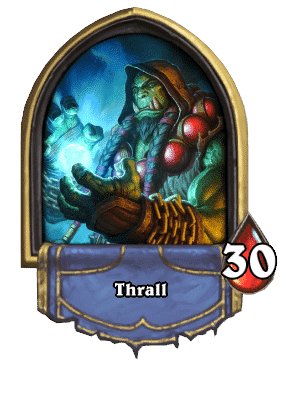
Resilient and steady Thrall is a winner of the last patch. The patch has made Even Shaman and Big Shaman even better against Aggro, but it’s not so much the nerfs themselves that did service to the class. The rise of Combo Druids that are naturally bad into Devolves, big minions, and hand disruption has made Big Shaman miles better, while incrementally improved Even Shaman.
Even Shaman is well-positioned into the current aggro portion of the meta, while still being able to pressure both Mage and Warlock very effectively. That is indeed the recipe for a successful deck in this meta: just be reasonably good against most stuff. Even Shaman can clean up after Discard Warlock remarkably well, which is another huge plus that propelled it to Top Tier 1. Expect Even Shaman to get better, since it will have at least three good Even-costed cards next expansion in Diligent Notetaker, Manafeeder Panthara, and Trick Totem. These new cards might allow Even Shaman to play a really low curve, cycling hard with Panthara and Voracious Reader, until you can finish games with burst provided by Crackle and the new weapon, Rune Dagger. A heavier version of Even Shaman might want to run Lightning Bloom in order to cheat out good cards early on.
Big Shaman has been refined to fit the current meta. Early Taunt minions are a must if you want to survive against Mages, thus it is advised that Colossus of the Moon is removed. This makes the deck more well-rounded against Aggro and Control alike, well worthy of Tier 1 status. A 14/14 on Turn 4 while fishing a battlecry from your opponent is nothing to sniff at.
Other than those two decks, Reno Shudderwock Shaman and Evolve Shaman are the closest to playable decks the class has. With Reno Shaman, a Galakrond package is heavily favored right now for its high tempo, which complements an abundance of tech cards. We hope that the deck will be good again once Galakrond is rotated, for the nerfed cards might be unnerfed. Reno Shudderwock Shaman has a new board clear option in Tidal Waves, but it’s probably not going to replace Earthquake. Devolving Missiles will probably be played, though.
With Evolve Shaman, the best way to build the deck might be to rely on Boggspine Knuckles’ raw power. The card is so good that Doppelgangster is seeing play again, while Hoard Pillager and Dread Corsair are included only to capitalize on the synergy with the weapon. Evolve Shaman might be sleeper OP, but there’s no way to find out with the playerbase not picking it up.
DRUID
RANK 4 – 346 POINTS
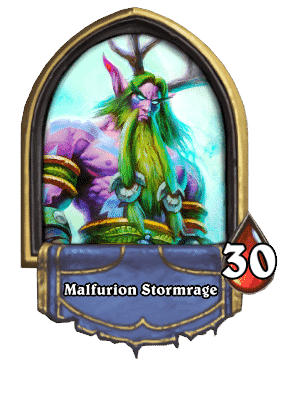
Druid is like ancient hardwood. It’s almost never the most decorated class, but it’s never the worst looking. It’s present in every meta game, but is rarely really gamebreakingly popular. Spell-weilding Malfurion is once again in the middle of the pack, but his presence is certainly greater than just a month ago. Combo decks–Malfurion’s specialty–once again infest the ranks in the form of Malygos and Linecracker Druid.
Jade Druid is still the best Druid deck, however, it has gotten some fierce competition this time around. Jade is an archetype that needs to adapt to survive, and the easiest way to do it in Wild is to highroll more often. Barnes is now a mainstay in the deck, replacing top-end like Yogg and allow an early Kael’thas to wreck havoc. This swing is very much needed in some matchups, especially the one against Time Warp Mage.
Malygos and Linecracker Druid are back at full force, occupying two spots in the Middle of Tier 2. At first glance, these decks might look different, but they operate the same in essence: you drop the combo and the game ends. Spreading Plague looks much better against aggro now that Warglaives aren’t a thing anymore, and both decks can highroll a combo really early against Control. For Malygos and Togwaggle Druid, the new Forest Guide Omu can be used in place of Kun, but we aren’t sure if this is correct since Kun can be tutored with Juicy Psychmelon. We are also not confident about the future prospect of these decks in the a meta where all of the anti-combo cards will be rolling in.
It’s not just Jade Druid that gains from the new expansion. Token Druid, somewhat similar to its Standard counterpart, has crawled back into the limelight too. The deck is still quite good even with Fungal Fortunes nerfed. 3 mana draw 3 is still a really solid card. Survival of the Greatest and Runic Carvings might improve the deck even more as they can be abused with Kael’thas, or they can be great cards in Spiteful Druid or some sort of new Midrange Druid.
While Aggro Druid is dropping off the face of the Earth, the brand-new-but-not-so-brand-new Taunt Druid fills its exact spot in High Tier 3. The deck might be getting some massive buff, with Voracious Reader being an asymmetrical Jeeves that’s really might be really easily abused. Gibberling also works great with cheap board buffs. Like Even Shaman, Aggro Druid can utilize Lightning Bloom, a great card for early game board swarm if you have the draws to back it up.
WARRIOR
RANK 5 – 334 POINTS
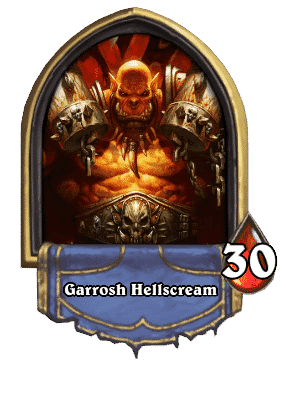
Warrior is another class that saw significant shake-ups in the past month. Pirate Warrior has lost the throne while existing Warrior decks are slipping away from top ranks, which means that the newcomers need to do extra hard to keep the class where it was. And they are not doing it well at all.
Corsair Cache tutoring Ancharrr was probably the single greatest adjustment to Pirate Warrior that we’ve seen in two years, so the nerf to Corsair Cache was predictably devastating. Not being able to kill off 3 HP minions in the early game and losing plenty of burst has weakened the deck in both the early game and the late game. Nevertheless, Pirate Warrior still has plenty of staying power to play the longer game, which is crucial in matchups against decks like Reno Combo Priest, and can still confidently queue into a Time Warp Mage. Unfortunately, there doesn’t seem to be good upgrades for the best Warrior deck currently. There aren’t many reasons to play Reaper’s Scythe over other weapons, and the big debate here might just be whether to play Voracious Reader for draws and replace Ancharrr (or complement Ancharrr) with bigger weapons.
Bomb Warrior is in a less favorable position too now that Demon Hunter is gone. The number of Time Warp players have gone up and this is bad news for the Bomb wranglers, as Time Warp Mage is one of the worst matchups for the deck. Along with Galakrond Warrior which hasn’t improved for the past few months, Bomb Warrior slipped to Low Tier 2.
Odd Warrior is still Odd Warrior, a good aggro farming tool. A few innovators have tried to improve the deck’s resilience against Warlocks by adding Dr. Boom, Bladestorm, and Plague of Wrath, but in general the deck looks more or less the same. Lord Barov might be an excellent inclusion in Odd Warrior, but it still doesn’t solve the deck’s lack of win-condition. Coerce might be worth a try too.
If you’re looking for a real innovation, try Dead Man’s Hand Warrior. The deck’s defensive core has been replaced by a Risky Skipper package, which proved to be extremely resilient. Dead Man’s Hand enthusiasts like Zeddy asserts that the deck does well against most meta decks right now. New cards like Lord Barov will only improve the deck further, or at least gives it more tech options. It still has a fatal weakness, though: Time Warp Mage. If the Mage loses traction in the following expansion, Dead Man’s Hand Warrior might be able to sneak into Tier 2.
PRIEST
RANK 6 – 252 POINTS
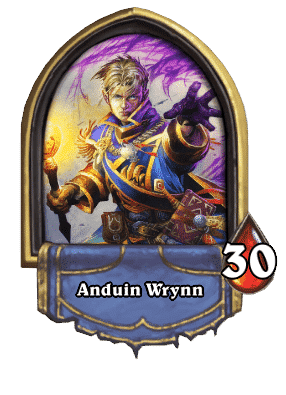
One word: Raza. Any prevalence that Anduin might have right now is largely owed to the resurgence of its iconic Combo Reno deck, brought back after the nerf revert. Having only one relevant deck makes it really easy to mulligan against a Priest, which means the class can’t really take off. There are signs that Inner Fire Priest might be back next expansion, though, so that should help Anduin a bit.
Combo Reno Priest is the best Priest deck there is, though it’s position has been a bit shaky following the Aggro nerf. Combo decks like Druids and disruptive decks like Dead Man’s Hand are tough cookies to crack. On the other hand, Discard Warlock and Big Shaman are Reno Priest’s new favorite preys. But still, Reno Priest can’t combo against Time Warp Mage fast enough to save its life. This might change, though, as Mindrender Illucia provides one of the most interesting counterplays possible to Combo decks. You need great timing to make Illucia works, but when she does, she’s more than worth it.
Surprisingly, the cards that might help the deck the most from Scholomance might not be class cards at all. Lorekeeper Polkelt and Sphere of Sapience might be great deck manipulating options to ensure you draw into your combo pieces.
Inner Fire Priest is supposed to die along with the nerf to Power Word: Shield, but it finds another way to utilize the card, or any other cheap Priest spells for that matter. Sethekk Weilweaver is such a powerful card that it wins games versus Control by its own (see Underbelly Angler), and Renew is a decent card that works well with the rest of the deck. What Inner Fire Priest needs is another way to close out games early, and a vanilla 1 mana 1/4 like Frazzled Freshman and an early buff that 1 drops can curve into and value trade like Power Word: Feast might be just what the deck needs.
There’s another application of Mindrender Illucia in Inner Fire Priest and any other fast-paced Priest that might pop up in the future: as a mini-Loatheb. You can dump your hand then play Illucia so the opponent can play nothing for a turn. This is especially good in Inner Fire, as you should have no playable card in the turn you go all in.
Big Priest couldn’t resurrect itself the way Big Shaman did, but it got marginally better at least. Making-a-bunch-of-statues seem to be a valid enough strategy against both Aggro and Time Warp Mage. Also, it found a new target to cheat out: Scrapyard Colossus. Now it just need to keep getting high-value cards back with Raise Dead and it’ll be pretty good.
Of all the Spiteful decks, Spiteful Priest seems to be the strongest. The Dragon package has always been a solid midrange strategy, and new dragon support like Aeon Reaver and Frizz Kindleroost help out even further. Spiteful is no longer the dominant force it once was as Turn 6 is way too late for a power spike nowadays, but it is enough pressure if you manage to solidify your early game position. Spiteful Priest is in the Middle of Tier 3 for now, but it might see room for improvement if there are enough spell-generating minions to trigger an early High Priestess Alura.
PALADIN
RANK 7 – 229 POINTS
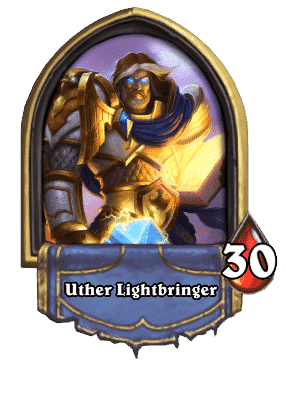
Paladin, along with Rogue, are now strictly aggro classes that can’t aggro as well as other classes. Unlike Rogue, Paladins have a nice niche of being able to beat Time Warp Mage somewhat consistently. Unfortunately for Uther, most of the strong new cards don’t support their established archetypes; instead, we see decks like Murloc Paladin popping up here and there. The class is also trying to grow out of its Aggro reputation, but experimentation with Reno Paladin and Libram Paladin hasn’t been fruitful so far.
Odd Paladin is now the flagship deck of the class, as it has been for the majority of the past two years. It’s the consistent, the resilient, the ol’ reliable. Odd Paladin is the garbage-proof for the class so that it never suffers from a gruesome fate like that of Hunter. Now that Time Warp Mage reigns again, there’s even more reason to play Odd Paladin. Uther would much rather playing against Jaina than Garrosh.
As we mentioned earlier, Odd Paladin’s biggest problem in Aggro matchups is having initiative and Animated Broomstick might help Odd Paladin gain initiative back. Goody Two-Shoes and Tour Guide can be massive help as well, the former being a solid 3-drop, the latter being a 1 mana 3/3 that synergizes with the rest of the deck.
Mech Handbuff Paladin is still a relatively strong deck although it only has one new addition. Replicatron is a really annoying minion, especially when buffed and magnetized on. It’s a very sticky and undoubtedly powerful minion that also acts as a late-game powerhouse; however, it doesn’t solve Handbuff’s weakness to silence effect. Mech Handbuff Paladin is now underplayed, so the deck needs to be observed more to carefully assess its power level in the current meta. Non-mech Handbuff Paladin might be a thing now too, with great Rush minions like the 1-mana Broom and cheap refills like Voracious Reader being available.
Another breakthrough deck of this expansion is Murloc Paladin, a deck that’s heavily pushed with a few really good cards. Murloc Paladin is consistent enough to win without Prismatic Lens, and highroll enough with Prismatic Lens to be considered decent. Its main weakness, as with Murloc Shaman in the past, is that it often loses board early on in Aggro mirrors. This might no longer be the case with High Abbess Alura being introduced. There have been talks about abusing this card in Murloc Paladin using Tip the Scales and Hydrologist, and possibly another cheap spell generator like Banana Buffoon.
Exodia Paladin and Reno Paladin are now more playable following the buffs to Libram cards . It now plays the Kaleidosaur quest to reap off benefit from free coin generators and draws like Time Warp Mage, and as crazy as is sounds, to actually finish the quest. 0-mana Libram of Wisdom can be replayed until you satisfy the condition to wake Galvadon, which can surely bring your opponents to their demises! Well, if not, Auctionmaster Beardo helps.
Versions of Libram Paladin without an Exodia win condition have surfaced as well, utilizing incredible value from Lady Liadrin and Lynessa Sunsorrow. Just remember to play Libram of Hope on your minions to get them back later. Devout Pupil seems like a great upgrade for this deck as he’s a good defensive minion that is very buffable when he’s cheap. High Abbess Alura looks great too. Remember, she will cast buffs on herself.
Big Paladin might be a deck to watch out for future improvement. Call to Adventure can always tutor Barnes if you build your deck right, and Duel! is essentially a minion cheat card while removing opponent’s resource. Turalyon, the Tenured might fit right in this deck as an option to cheat out from your deck.
DEMON HUNTER
RANK 8 – 128 POINTS
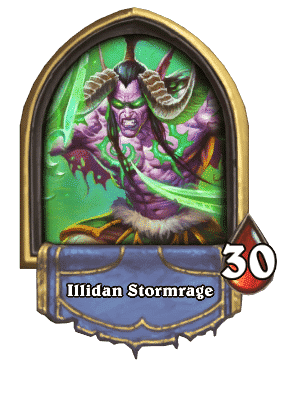
Poor Illidan. He really felt the hatred of 10,000 years with yet another nerf. With Odd Demon Hunter now weakened, Demon Hunter join ranks with Rogue and Hunter as the three weakest classes in the game. Illidan is excusable, though, being the weakest class with only two playable decks to boot.
What do the cards Imprisoned Antaen, Skull of Gul’dan, Bad Luck Albatross, Altruis the Outcast, Battlefiend, Glaivebound Adept, Metamorphosis, and Warglaives of Azzinoth have in common? They are nerfed cards that were (or still are) present in Odd Demon Hunter. And the deck is still on top of Tier 2! The main difference with Illidan now is that people have to get creative with deckbuilding as there are fewer auto-includes. Odd Demon Hunter might get marginally better next expansion, as new cards like Ace Hunter Kreen, Demon Companion, and especially Trueaim Crescent will improve its early game against other Aggro decks.
Aggro Demon Hunter gets much weaker with each passing month and more core cards being nerfed. The deck is largely overshadowed by Odd Demon Hunter and can’t fall back on a broken hero power. Exciting news for non-Odd players are coming, however. Glide might look like one of the best card draw and hand disruption cards ever printed, and this might fit right into Pirate builds with plenty of cheap minions. Soul Fragments might be worth tinkering with, too, as Marrowslicer is a good weapon, while Soulshard Lapidary and Shatterer Mystic provides good pay-offs.
The “slowest” Demon Hunter deck is a Reno Demon Hunter that plays all the good class cards. There are just that many good Demon Hunter cards, even after two rounds of nerfs. Playing strong cards on curve into a Zephrys finisher is oftentimes enough versus slow decks, while Reno helps a ton versus aggro. However, it might actually get stronger, especially in the combo disruption department, as cards like Glide and Star Student Stelina are introduced. Ancient Void Hound and Felosophy might urge people into toying around with a Big Demon package too.
ROGUE
RANK 9 – 121 POINTS
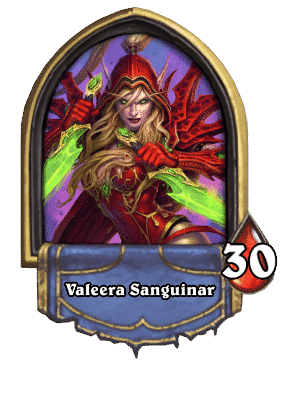
Valeera has yet to find a way out of her pithole. The birth of Odd Demon Hunter has rendered Odd Rogue redundant, while the Secret package with Shadowjeweler Hanar isn’t nearly as impressive as in Standard. The greatest hope for the class now is still Aggro Rogue, a deck that’s showing potential with a robust Stealth package.
Aggro Rogue is relying on powerful Stealth support cards that interweave with their Pirate package. Greyheart Sage provides much-needed card draw, and Ashtongue Slayer can be used as a single-turn Cold Blood or for value trade. The deck isn’t weak by all means, it’s just that so many decks are doing the same thing and it makes Aggro Rogue rather bland and unimpressive. The same thing holds true for Kingsbane Rogue. Secret Passage is like Soularium on steriod, and might be just the refill any Aggro or Midrange Rogue needs to close out games. Cutting Class is also worth considering if you can build a big Kingsbane, or play plenty of weapons like Waggle Pick, or simple an Odd Rogue dagger.
Odd Rogue lost Bad Luck Albatross and gained Cursed Vagrant and some Stealth minions. They couldn’t use any of the Stealth or Stealth-gaining pirates. Needless to say how that went. However, great things are in store for the deck in the future. We’ve already mentioned Secret Passage, and there’s not much to be said about the obvious synergy that Vulpera Toxinblade provides. You might want to play Deadly Poison now to get that cheap Cutting Class draw. Doctor Krastinov might be a decent upgrade to Captain Greenskin too, since he can remove a minion and helps with the weapon buffing plan.
Shadowjeweler Hanar is an extremely powerful card, but there’s not yet a good enough home for him. Hanar and his secrets see the most success in Galakrond Rogue, but Galakrond itself has just been nerfed. Right now, Hanar is seeing play in Reno Rogue, the weakest viable deck in our report. Maybe Deathrattle Rogue will pop up again somewhere along the way. Its biggest weakness was tempo, which is something Infiltrator Lilian can help with.
HUNTER
RANK 10 – 111 POINTS
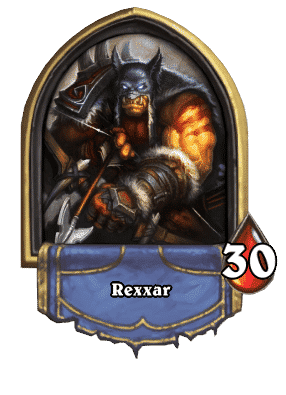
Rexxar LOL. Zero representation in the first two tiers LOL. Hunter bad LOL. We’ve heard so many times how bad Hunter is right now, so let’s focus on the positive notes for now.
Reno Hunter is the most legit deck Hunter has right now, with an early game package that can fend off aggro and quite a hefty mid-game arsenal. The good matchup against Druids (lots of pressure, lots of Pressure Plates) have lifted the deck’s position from last report. Although consistent, it’s only consistently “alright” most of the time, and never really edges out anything. It barely sneaks into Tier 2 for winning enough games versus Aggro, Control, and Mages. Going forward, the deck might look completely different. Trueaim Crescent is a sick addition, while Professor Slate might encourage the addition of more direct damage spell as he’s just that good of a card. Wildclaw Shan’do might encourage the deck to play a more beast-centric package.
Reno Hunter and Even Hunter are the only competitive decks that’s received a “buff” after the last patch, as Transfer Student is going into almost every iteration of these decks. While this can be considered a good thing, it’s just saying how much of an improvement Hunter decks need in the early game. With Scavenger’s Ingenuity nerfed, Rexxar is even less likely to gain board control around Turn 3 to 5, which is often the backbone to its strategy. Even Hunter, along with every other Even decks, received a massive boost in Manafeeder Panthara. But it shines the brightest in Hunter. It recycles itself, has Beast synergy, and goes really well with cards like Phase Stalker.
Mech Hunter gets a tad better now faster Aggro decks aren’t half of ladder anymore. It can prey on slow decks with a very explosive hand, but it’s not consistent or explosive enough in many cases.
Deathrattle Hunter got some really cool toys—Augmented Porcupine, Zixor, and Mok’nathal Lion. The greatest upgrade these cards gave to the archetype is many, many, many highlights on Reddit! Did you see that Porcupine OTK on that poor Big Priest? Jokes aside, these new cards are nowhere near enough. What Deathrattle Hunter needs is a class-only pre-nerf Undertaker, since it’s Turn 1 and 2 are so abysmal. And a Hunter who loses board control Turn 1 is not going to win any games. Or maybe a Trueaim Crescent, a way to break your Eggs as soon as you play them.
Spiteful Hunter can be considered a sub-archetype of Beast Hunter, with the only difference being that it runs Spiteful for its Nagrand Slam and Call of the Wild. The archetype doesn’t seem completely hopeless because both Call of the Wild and Nagrand Slam are overvalued, though Turn 6 is a tad too late for power spikes in this day and age.
Beast Hunter is mostly forgotten this expansion, but it might be the single Hunter deck that’s received the biggest boost. Apart from Trueaim Crescent, it’s received a way better Alley Cat (Wolpertinger), an early game buff (Adorable Infestation), a Spellburst Deadly Shot (Krolusk Barkstripper), a free draw (Manafeeder Panthara), and a cheap spell (Overwhelm). Our favorite is Wolpertinger, which works so well with Felboar and Scavenger’s Ingenuity, with the only concern the ability to reap off the benefits consistently. Another way to build the deck, as theorycrafted by our very own RenoJackson, is to ditch the 100% beast package with Master’s Call and include Shan’do Wildclaw for stats, Animated Broomstick + Ace Hunter Kreen for board control, and Voracious Reader for draw engine. Will this be enough to put Beast Hunter on the map? We’ll have to find out.
DECKCODES (OTHER DECKS)







































CONTACT
You might also be interested in...
Submit your Top 500 Legend Build, be seen by thousands of people!
Check out the Bazaar "the first free to play Hero-Builder for PC and Mac" Beginner's Guide! https://bazaar-builds.net/the-ultimate-beginners-guide-to-the-bazaar-tips-strategies-and-more/

